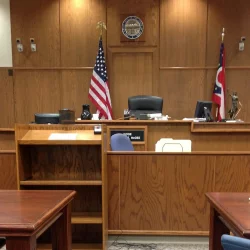Real Property Law 235-f: Understanding the Roommate Law in New York

Real Property Law 235-f, commonly known as the "Roommate Law" in New York, serves as a critical protection for tenants who wish to share their living spaces with non-immediate family members. This important legislation has significantly impacted residential tenancy arrangements throughout New York State, particularly in densely populated areas like New York City where housing costs continue to rise and shared living arrangements have become increasingly common.
What Is Real Property Law 235-f?
Real Property Law 235-f was enacted in 1983 to protect tenants' rights to share their homes with others. The law specifically prohibits landlords from restricting occupancy of residential premises to only the tenant named on the lease or to the tenant and their immediate family. This legislation arose in response to the landmark case of Hudson View Properties v. Weiss, which highlighted the need for legal protections for tenants who wanted to share their apartments with roommates.
The core provision of this law establishes that residential leases cannot restrict occupancy to the named tenant or the tenant's immediate family. Instead, the law explicitly permits the tenant to share their living space with additional occupants, provided certain conditions are met regarding occupancy limits and notification requirements.
Key Provisions of Real Property Law 235-f
Occupancy Rights
The foundation of Real Property Law 235-f rests on Section 235-f(2), which states:
"It shall be unlawful for a landlord to restrict occupancy of residential premises, by express lease terms or otherwise, to a tenant or tenants or to such tenants and immediate family."
This provision effectively invalidates any lease clause that attempts to prohibit roommates or additional occupants beyond those named on the lease. The law recognizes the practical reality that many New Yorkers need to share housing costs in order to afford living in the state's expensive housing markets.
The "One Additional Occupant" Rule
One of the most significant aspects of the law is what's commonly referred to as the "one additional occupant" rule. Section 235-f(3) provides that:
"Any tenant may share their dwelling unit with their immediate family, one additional occupant, and the dependent children of that occupant, provided that the tenant or the tenant's spouse occupies the premises as their primary residence."
This means that regardless of what the lease says, a tenant is legally permitted to have:
- Their immediate family
- One additional unrelated person (a roommate)
- The dependent children of that roommate
Multiple Tenants and the N+1 Formula
When there are multiple tenants named on the lease, the law becomes even more accommodating. Section 235-f(4) establishes what is often called the "N+1 formula," where "N" represents the number of tenants on the lease:
"If a lease names multiple tenants, each tenant is entitled to the same rights—meaning each tenant can have their immediate family plus one additional occupant and that occupant's dependent children."
In practical terms, this means that if two people are named on a lease, they could potentially have up to four adults living in the apartment (the two named tenants plus one additional occupant for each named tenant).
Occupancy Limits and Restrictions
While Real Property Law 235-f provides significant rights to tenants, it doesn't give them unlimited freedom to add occupants. The law includes important qualifications:
-
Overcrowding Restrictions: The law does not override local housing and building codes regarding overcrowding. Section 235-f(6) specifically states that the law doesn't permit occupancy that would violate laws regarding overcrowding, habitability, or safety.
-
Primary Residence Requirement: For the protections to apply, the tenant or the tenant's spouse must use the premises as their primary residence. This prevents tenants from renting apartments solely to sublet them to others.
-
Notification Requirements: While not always enforced, Section 235-f(5) requires tenants to inform landlords of the names of any occupants who are not on the lease within 30 days of their occupancy or within 30 days of a landlord's request for this information.
Legal Rights Under Real Property Law 235-f
Tenant Protections
Real Property Law 235-f provides several critical protections for tenants:
-
Protection Against Eviction: Landlords cannot evict tenants solely because they have roommates, provided the tenant is complying with the occupancy limitations outlined in the law.
-
Lease Renewal Rights: A landlord cannot refuse to renew a lease based on the tenant having permissible roommates under the law.
-
No Extra Charges: Landlords cannot impose additional rent or fees simply because a tenant has a roommate as permitted under the law.
-
Roommate Autonomy: The law does not require roommates to be approved by the landlord, undergo credit checks, or be added to the lease. The tenant maintains complete authority over who they choose as roommates.
Landlord Rights and Limitations
While the law significantly favors tenants, landlords retain certain rights:
-
Right to Information: Landlords can request the names of all occupants living in the unit.
-
Enforcement of Other Lease Terms: While landlords cannot prohibit roommates outright, they can still enforce other lease terms such as noise restrictions, proper use of facilities, and building rules.
-
Occupancy Standards Enforcement: Landlords can enforce maximum occupancy standards based on the size of the unit and applicable housing codes.
Practical Applications of Real Property Law 235-f
Navigating Roommate Situations
For tenants seeking to exercise their rights under Real Property Law 235-f, several practical considerations come into play:
-
Lease Review: Even though the law overrides contradictory lease provisions, tenants should carefully review their leases to understand all obligations and restrictions.
-
Communication with Landlords: While the law doesn't require landlord approval for roommates, maintaining open communication can prevent misunderstandings and conflicts.
-
Roommate Agreements: Though not required by law, tenants should consider creating written agreements with roommates to outline expectations regarding rent payments, utility sharing, and household responsibilities.
-
Notification Compliance: To fully comply with the law, tenants should notify landlords in writing about non-lease occupants within the specified timeframe.
Common Scenarios and Solutions
Scenario 1: Landlord Attempts to Evict Based on Roommates
If a landlord attempts to evict a tenant solely because they have a roommate not named on the lease, the tenant can cite Real Property Law 235-f as a defense, provided they're complying with occupancy limits.
Scenario 2: Lease Renewal Denied Due to Roommates
Should a landlord refuse to renew a lease because of the presence of legal roommates, the tenant may have grounds for a discrimination claim under Real Property Law 235-f.
Scenario 3: Roommate Departures and Replacements
When roommates leave, tenants can replace them without landlord approval, though notifying the landlord of the new occupant's name is required within 30 days.
Exceptions and Limitations to Real Property Law 235-f
Properties Not Covered
Real Property Law 235-f doesn't apply to all residential situations. Key exceptions include:
-
Owner-Occupied Buildings with Fewer Than Four Units: If the landlord lives in the building and there are fewer than four units, the protections may not apply.
-
Subsidized Housing: Some government-subsidized housing programs have their own occupancy rules that may supersede or modify Rights under Real Property Law 235-f.
-
Short-Term Rentals: The law generally applies to permanent residential arrangements rather than short-term rentals or vacation properties.
Legal Limitations
Even when the law applies, tenants should be aware of important limitations:
-
No Subletting Rights: Real Property Law 235-f doesn't grant the right to sublet. Subletting typically means the original tenant is not occupying the premises as their primary residence, which would fall outside the law's protections.
-
No Commercial Use: The law only protects residential use. Using the premises for business purposes may violate lease terms regardless of roommate provisions.
-
Roommates Have No Direct Rights: The law provides rights to the tenant named on the lease, not to the roommates themselves. Roommates don't have independent rights to remain in the apartment if the primary tenant leaves.
Real Property Law 235-f and Other Housing Laws
Interaction with Rent Stabilization and Rent Control
For rent-stabilized or rent-controlled apartments in New York, Real Property Law 235-f works alongside those regulations:
-
Succession Rights: While Real Property Law 235-f permits roommates, it doesn't automatically grant them succession rights. For a roommate to gain succession rights under rent stabilization laws, they typically need to have lived in the apartment as their primary residence for at least two years (one year for seniors or disabled persons) and must prove a familial or emotional and financial commitment with the departing tenant.
-
No Rent Increases: Landlords of rent-stabilized units cannot impose additional rent increases based on the presence of legal roommates.
Fair Housing Laws and Discrimination
Real Property Law 235-f also intersects with fair housing laws:
-
Protected Classes: If a landlord selectively enforces occupancy restrictions against tenants of certain races, nationalities, or other protected classes while allowing similar arrangements for others, this could constitute discrimination under fair housing laws.
-
Reasonable Accommodations: In some cases, allowing additional occupants beyond what Real Property Law 235-f permits might be required as a reasonable accommodation for a disability.
Recent Legal Developments and Court Interpretations
Key Court Cases
Several court decisions have helped define the scope and application of Real Property Law 235-f:
-
Capital Holding Co. v. Stavrolakes: This case reinforced that the roommate law applies regardless of whether the lease contains a no-roommate clause.
-
MSG Pomp Corp. v. Doe: The court held that a landlord couldn't evict a tenant for having a roommate, even when the lease prohibited it.
-
Mazzola v. Best Brownstones LLC: This case addressed the intersection of the roommate law with family definitions, confirming that non-traditional family members could qualify for protection beyond the "one additional occupant" rule in certain circumstances.
Legislative Updates
While the core provisions of Real Property Law 235-f have remained relatively stable, associated housing regulations continue to evolve:
-
Housing Stability and Tenant Protection Act of 2019: This significant legislation strengthened tenant protections throughout New York State and indirectly reinforced roommate rights by limiting landlords' abilities to remove tenants.
-
COVID-19 Impacts: Temporary eviction moratoria during the pandemic highlighted the importance of Real Property Law 235-f for many tenants who needed to adjust living arrangements due to economic hardship.
Practical Tips for Tenants and Landlords
For Tenants
Tenants looking to exercise their rights under Real Property Law 235-f should:
-
Document Everything: Keep written records of all communications with landlords regarding roommates.
-
Research Local Occupancy Codes: Understand local housing codes to ensure compliance with legal occupancy limits.
-
Seek Legal Assistance When Needed: Housing attorneys specializing in tenant rights can provide guidance in conflicts involving roommate arrangements.
-
Understand Liability: Remember that the tenant named on the lease generally remains responsible for all rent payments and property damage, even if caused by roommates.
For Landlords
Landlords working within the framework of Real Property Law 235-f should:
-
Update Lease Language: While no-roommate clauses are unenforceable, leases should clearly state that primary tenants are responsible for all occupants' actions.
-
Maintain Reasonable Occupancy Standards: Develop and consistently apply occupancy standards based on apartment size and safety considerations.
-
Follow Proper Procedures: If issues arise with roommates, address the behavior rather than the mere presence of the roommate.
-
Know the Notification Process: Understand how and when to request occupant information as permitted by the law.
Conclusion
Real Property Law 235-f represents a significant tenant protection that has helped countless New Yorkers secure affordable housing through shared living arrangements. By permitting roommates regardless of lease restrictions, the law acknowledges the economic reality of housing costs in New York while balancing the legitimate interests of property owners.
For tenants, understanding these rights can prevent unnecessary conflicts and unjust evictions. For landlords, working within the framework of the law allows for proper management while respecting tenants' legal rights. As housing pressures continue to mount in urban areas, the importance of Real Property Law 235-f as a cornerstone of tenant rights in New York only grows.
Whether you're a tenant seeking to share your apartment or a landlord managing residential properties, a thorough understanding of Real Property Law 235-f is essential for navigating the complex landscape of residential tenancy in New York State.
More to Read:
Next Posts:





